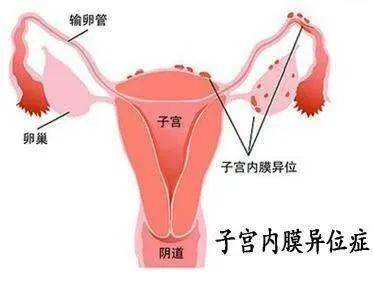What is endometriosis?
Endometriosis (internal heterotopia) refers to the appearance, growth, infiltration, repeated bleeding, and subsequent pain, infertility, nodules, or masses of endometrial tissue in locations outside the uterine cavity. Endometriosis is a common disease among women of childbearing age.
What are the symptoms of endometriosis?
Dysmenorrhea: Dysmenorrhea is the most common symptom, with severe pelvic pain often experienced before and during menstruation. This pain may progressively worsen and be accompanied by systemic symptoms such as nausea, vomiting, etc. Dysmenorrhea significantly impacts the patient’s daily life and work and is one of the main reasons patients seek medical help.
Chronic pelvic pain: Refers to pelvic pain lasting more than 6 months, which can affect the patient’s daily life and work. The pain is usually located in the lower abdomen and may occur at any time during the menstrual cycle.
Dyspareunia: Especially deep dyspareunia is common in patients with endometriosis.
Painful defecation or urination: Pain during bowel movements or urination may occur during menstruation, usually associated with rectal or bladder involvement.
Infertility: Endometriosis is an important cause of female infertility. Approximately 30-50% of infertile women are diagnosed with endometriosis.
Other symptoms: Other symptoms may include fatigue, irregular menstruation (such as excessive, scanty, or irregular bleeding), and other systemic symptoms such as lower back pain and mood swings.
How is it diagnosed?
Medical history and physical examination: Detailed medical history collection is key to diagnosis. Doctors will inquire about the patient’s symptoms, menstrual history, sexual history, and family history. Physical examination includes pelvic examination to evaluate pain, masses, and other abnormalities. Through detailed medical history and physical examination, doctors can preliminarily assess the likelihood of endometriosis and adenomyosis.
Imaging studies: Ultrasound: Ultrasound examination is the most commonly used initial screening method, which can detect ovarian cysts and other pelvic lesions. Ultrasound examination is simple and non-invasive, suitable for initial assessment.
Magnetic resonance imaging (MRI): MRI provides more detailed imaging information, helpful for evaluating the extent and depth of lesions, especially in cases suspected of deep infiltrating endometriosis and adenomyosis. MRI is valuable for complex cases and preoperative evaluation.
Laparoscopy: Laparoscopy is the gold standard for diagnosing endometriosis. Through laparoscopy, ectopic lesions in the pelvic cavity can be directly observed, and biopsies performed for confirmation. Laparoscopy can also be used for treatment simultaneously. Despite being invasive, the diagnostic accuracy and therapeutic effects of laparoscopy are crucial in the management of endometriosis.
Serum markers: Serum CA-125 levels may be elevated in some patients with endometriosis, but its specificity and sensitivity are limited, so it is usually used in conjunction with other diagnostic methods. The measurement of CA-125 levels can be used as a tool for auxiliary diagnosis and evaluation of treatment effectiveness but cannot be used alone for confirmation.
Who is more likely to develop endometriosis?
1. The peak age for endometriosis is during the childbearing years, with 76% of patients with endometriosis occurring between the ages of 25-45.
2. Women who delay childbirth or remain childless are at higher risk for endometriosis. Pregnancy or lactation can suppress ovarian function, preventing and treating endometriosis.
3. Multiple induced abortions, cesarean sections, or intrauterine operations can increase the risk of disease.
4. Endometriosis is a hereditary disease, and the risk of developing the disease is several times higher in individuals with affected sisters or mothers compared to the general population.
How is it treated?
Treatment of endometriosis varies depending on the patient’s symptoms, age, and fertility requirements. The following are common treatment methods:
1. Mild or asymptomatic mild lesions can be managed with watchful waiting treatment, without implementing any treatment measures, to observe the progression of the disease.
2. Mild patients with fertility needs can undergo drug treatment after a definitive diagnosis, while those with severe conditions can undergo fertility-preserving surgery.
3. Severe patients who are young and do not have fertility requirements can undergo fertility-preserving surgery of the ovaries combined with drug treatment.
4. Patients with severe symptoms and lesions without fertility requirements can undergo hysterectomy and bilateral adnexectomy as well as lesion clearance surgery.
How to prevent endometriosis?
Pay attention to menstrual hygiene, avoid sexual intercourse during menstruation; adolescents with dysmenorrhea or amenorrhea should seek specialized examination promptly and detect obstructive reproductive tract anomalies early; for patients with fertility plans, it is recommended to complete childbirth early; for patients without fertility plans, it is advisable to take oral combined oral contraceptives or place the levonorgestrel-releasing intrauterine system.


